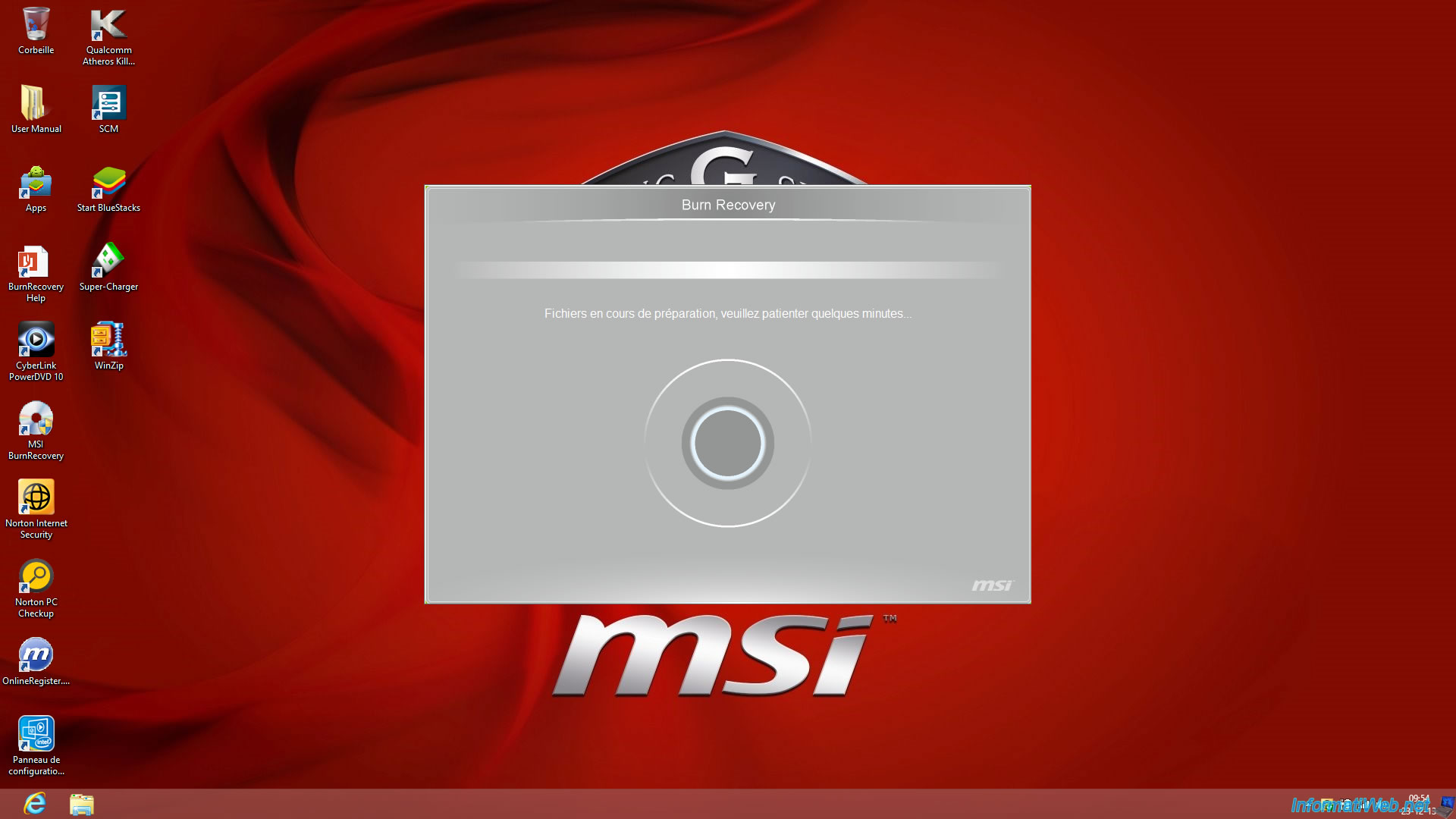

- #USING EXTERNAL HARD DRIVE WITH MSI BURN RECOVERY WINDOWS 10#
- #USING EXTERNAL HARD DRIVE WITH MSI BURN RECOVERY CODE#
- #USING EXTERNAL HARD DRIVE WITH MSI BURN RECOVERY TRIAL#
- #USING EXTERNAL HARD DRIVE WITH MSI BURN RECOVERY PC#
- #USING EXTERNAL HARD DRIVE WITH MSI BURN RECOVERY WINDOWS#
Microsoft uses a tablet-style trick with its Surface range. If not, check your PC’s online help files to see if there is a way to do it. You can do this from WinRE or Safe Mode, if you can get to those. If not, you will have to change the boot order, which means changing the settings in an old-style BIOS chip or a new-generation UEFI system.
#USING EXTERNAL HARD DRIVE WITH MSI BURN RECOVERY WINDOWS#
You might be lucky and find that a restart will recognize your new USB thumbdrive loaded with Windows 10. Most PCs are set up to boot from their C drive. However, you do need to worry about the boot order.
#USING EXTERNAL HARD DRIVE WITH MSI BURN RECOVERY PC#
You don’t need to worry about a product key, because your PC is authenticated online, and your activation data is stored against the Microsoft account email address that you use to log on to Windows 10.
#USING EXTERNAL HARD DRIVE WITH MSI BURN RECOVERY CODE#
Microsoft provides the code and the instructions online.
#USING EXTERNAL HARD DRIVE WITH MSI BURN RECOVERY WINDOWS 10#
If not, you can repair or re-install Windows 10 from a DVD or an 8GB USB thumbdrive. If you can’t fix your PC, then you will need to boot it from a recovery CD or DVD, or from a new copy of Windows 10.Ĭongratulations if you made a recovery drive before you needed one, by which time it was too late to make one. There isn’t one for the Black version, but Microsoft has some online help at Troubleshoot black screen problems. (This is always a good idea.) Otherwise, Windows 10’s troubleshooters cover a wide range of topics, including the old BSoD or Blue Screen of Death. System Image Recovery would depend on you having made a system image backup beforehand. System Restore would take you back to a setup saved before you ran your tune-up utility. Other troubleshooting options include System Restore, System Image Recovery, Startup Repair, Command Prompt, Startup Settings, UEFI Firmware, and “Go back to previous build”, if there is one. Since you have a blank screen problem, it may be worth updating the video graphics driver. Once you get into Safe Mode, you can use the troubleshooting and reset or recovery options to repair your PC. It may bring up WinRE or the UEFI/Trusted Platform Module (TPM) screen – see below. It’s impractical with today’s Windows 10 computers, which can start in eight to 10 seconds, but you can still try it. (You may need to look up which key to press.) That worked when Windows generally took from 40 to 90 seconds to start. If not, you can leave it until the battery runs flat then try again.īefore WinRE arrived, you could get into safe mode by pressing a key such as F2 or F8. (Touching the power button usually invokes a sleep or hibernation mode where the PC can be woken up by a network connection.) In extremis, you can ensure it’s off by unplugging it from the mains and removing the laptop’s battery, if possible. To make sure it is off, hold the power button down for at least five seconds. However, you are definitely booting your PC if you start with it turned off. That depends on Windows 10 counting boots correctly, as distinct from restarting from sleep or recovering from some other failure. Windows RE is supposed to appear after your PC has failed to boot two or three times. That’s not working on your laptop, but you can try to force it.

In theory, WinRE makes it simple to get into safe mode. Safe mode was designed to solve the chicken-and-egg problem that you need to access your PC to fix it, but you can’t access your PC if it won’t start. If you can’t do that, you will have to – as WinRE puts it – “use a device”. From there you can get to safe mode and use the troubleshooting and repair options. So, your first aim should be to get to WinRE. If it can’t fix it, it should switch to the Windows Recovery Environment, otherwise known as Windows RE or WinRE, which boils down to two options:ġ) Start Windows in safe mode using the code on the internal hard drive, then use the troubleshooting routines to fix it.Ģ) Use code on an external device such as a recovery DVD or USB thumbdrive to start Windows, and then repair or replace the code on the internal hard drive. If Windows 10 knew you had a blank or even a black screen of death, it would try to fix it. Given that tens of thousands of expert programmers have worked on the code over the past 30 years, the number of safe, simple, significant and forwards-/backwards-compatible improvements may be quite small. Microsoft has spent a lot of time (and money) trying to make Windows self-repairing, partly because it generally gets the blame when other programs – or users – try to “improve” it. Said machine then bricked: boot begins, then the screen blanks.Īre there any steps that I can take to recover access to the machine? Failing that, can I recover my files from the hard drive, installed in a USB cradle? John When it restarted, it reported a missing component.
#USING EXTERNAL HARD DRIVE WITH MSI BURN RECOVERY TRIAL#
I recently ran a free trial of a PC tune-up utility, including a disk clean-up routine, on my Windows 10 laptop.


 0 kommentar(er)
0 kommentar(er)
